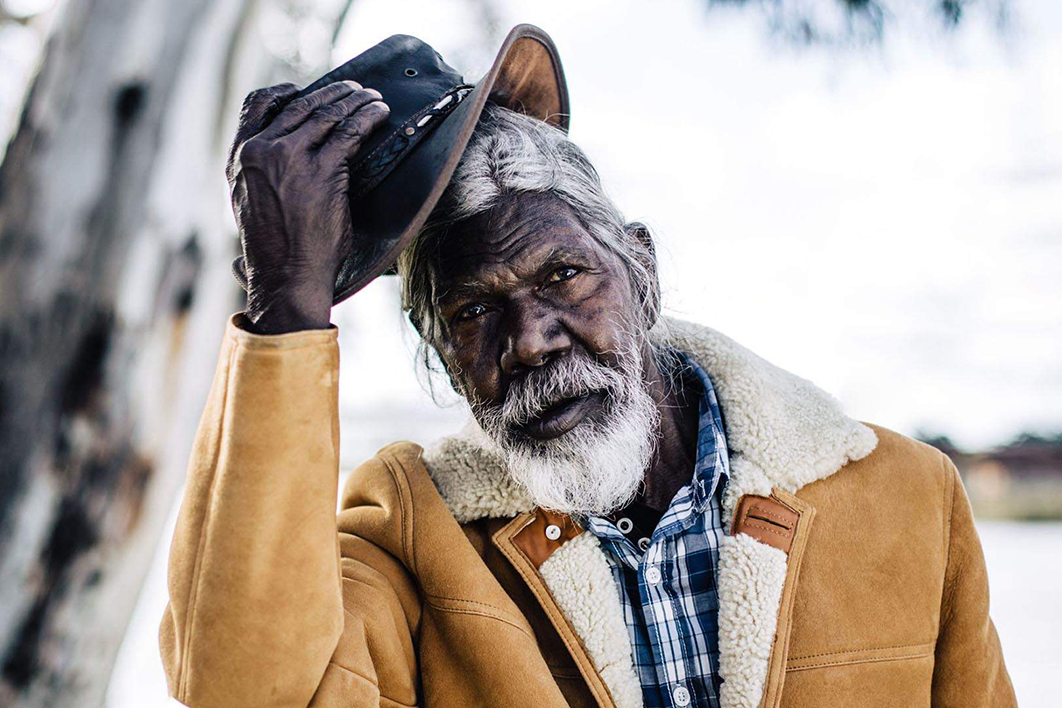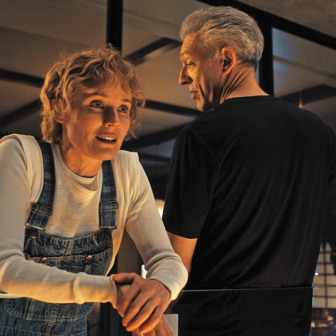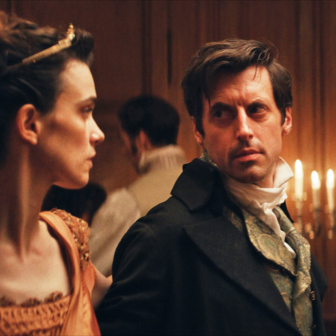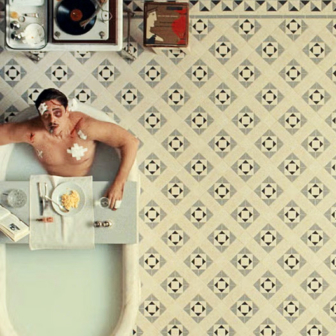Since his first screen appearance in Nicolas Roeg’s Walkabout (1971) as the unnamed boy who helps rescue two privileged children stranded in the outback, David Gulpilil has been a significant figure in the New Australian Cinema. In fact, that film might almost be said to have ushered in the revival. Since then, Gulpilil has invariably brought to his roles a potent charisma and a sense of effortlessly inhabiting his characters.
“This story is about me… and no one else can do the life story of me,” he announces towards the end of My Name Is Gulpilil. This is no mere egotistic statement. He may be famous for his film work, but there was a good deal more to his life and, as the chief voice in the film, he can be admired for his unsparing approach to his own story.
Director/co-producer Molly Reynolds, with whom he had a very productive working relationship during the years of the film’s shooting, has interspersed glimpses of Gulpilil’s past with his elderly and cancer-stricken present. Flashbacks take us to his youth, his voice-overs recalling his time at the Mission School, his English teacher, and the aptitude he revealed for hunting and dancing. As he says, he “was a non-drinker, non-smoker. Then.”
Reynolds’s gripping film is framed by scenes of Gulpilil receiving medical treatment for his longstanding illness. While the film is undeniably a celebration of his amazing life and career as actor, singer and dancer, it never flinches from its darker aspects, including his alcoholism. The observations about these episodes by the elderly, suffering Gulpilil are all the more moving for being utterly devoid of self-pity. At this late stage of his life, he appears to be trying to come to terms with the jail sentence he served, the failed marriages, and his dealings with “the white man’s disease.”
He now relies a great deal on his carer Mary Reefed, who is in fact the only other “character” in the documentary. There is something unsentimentally touching about the relationship they have developed: she tends to his physical needs and he relies on her for medical treatment, help with exercising — and sometimes as the audience for his pronouncements about the state of his life and its limited future.
“I’m not scared, but I’m sorry,” he says of his approaching death. He wants to see his past again “before I go.” He emerges as a many-sided man who, whatever fame he has found, still reflects on what it was like to hunt for food, or when he was sent to jail for a year for assaulting his wife, or how white men have made fortunes from exploiting the land he came from.
He is fluent about his achievements and his misgivings. Filming Storm Boy (1976), in which his character bonded with a young white boy, he recalls feeling “I’m there with the Western world.” Acting, he felt like “two people living in one world” — himself and the part he plays. But he also can’t refrain from wondering, “Why did I leave my country?”
My Name Is Gulpilil focuses chiefly on Gulpilil’s life in film. As he says, “I like making films. It’s natural… like I am.” He often uses the word “natural” in talking about his film roles, as though he found in film a way to be and present himself.
In his last film role, in the 2019 remake of Storm Boy, he plays the father of Fingerbone Bill, the Aboriginal boy who befriended the eponym in the original film. Between Walkabout and the Storm Boy remake, he was a compelling presence in about three dozen films, including some of the most significant Australian-made over several decades, as well as the odd overseas–Australian co-production.
In the 1980s, he appeared in the key role of Benelong in the miniseries version of Eleanor Dark’s The Timeless Land, and in the wildly popular Crocodile Dundee (1986), in which he dealt out some memorable ripostes. Thirty years after his debut film, he played the title role in Rolf de Heer’s The Tracker (2002), one of those new-century Australian westerns in which the representation of the Indigenous character reflects a cultural shift.
Gulpilil’s tracker, though always walking while the others of the party ride, maintains a knowing composure as he listens to racist talk, and there is a moment of genuine rapport when the new leader of the search party releases him from his chains. Reynolds’s film astutely focuses on this telling shot.
A decade later he worked for de Heer again in Charlie’s Country (2013), in which, as the titular Charlie, the now sixty-year-old Gulpilil is depicted as an Aboriginal man who is fed up with white domination and ventures back to the homeland and culture he knew. As such, there may well be a biographical element alongside de Heer’s ongoing engagement with issues relating to Indigenous lives.
Gulpilil’s reputation in Australian film over fifty years has no doubt facilitated the increasing presence of other Indigenous figures and films in our cinemas. Think of such notable examples as director/cinematographer Warwick Thornton’s Samson and Delilah (2009) and Sweet Country (2017) or actor/director Wayne Blair’s The Sapphires (2012), starring Deborah Mailman, who now has more than forty films to her credit, as does actor Aaron Pedersen, imposing star of Goldstone (2016) and High Ground (2020). Not only are more Indigenous personnel engaged in film, but the many ways in which they are involved are testimony to an industry moving with the times.
Gulpilil’s life may be nearing its end, but his legacy — both his own achievement as actor and his contribution to a changing cultural context — will persist. •




